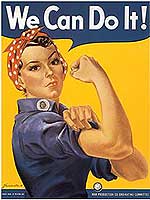Urban Green

Even the smallest of balconies can host a few plants and add some much needed greenery to the urban jungle.
By Sion Lee
I have always had an affinity for all things green. I love the feeling of cool grass beneath my bare feet, the smell of the bouquet of roses sitting on my kitchen table, the gracefulness of a weeping willow… I am easily enamored by plants and trees. The New York Botanical Garden is my favorite place to be – ever. It is not a surprising confession then, when I say that one of my goals in life is to have a huge garden where I can plant my own collection of greens.
It’s slightly difficult, however, to maintain such a garden in New York City. While it is true that certain boroughs have more space than others (basically all boroughs except Manhattan), space is limited and expensive. As a resident of Queens, New York City, I am fortunate enough to live in a building that has a balcony. The balcony is made of concrete, but it has enough space to place potted plants and small trees. My family grows green peppers and ruby red cherry tomatoes each year. Yes, they’re delicious – but they are not enough to quench my need for seed.
This is where community gardens come into play. A community garden is self-explanatory: it is a garden for the people, created by the people. It is not uncommon for vacant lots to turn into community gardens. It is place where the people living in the community can come together to grow fresh produce. A community garden has many environmental and health benefits. For one, more plants would mean more oxygen restored into the air. This would reduce air pollution, which is especially crucial in highly polluted urban areas. Participating in a community garden would also increase environmental awareness.
Locally grown fruits and vegetables are often said to taste better and to be better for the environment. While there have not been any comprehensive studies to support these claims, I believe that just reaping what you have sowed is a truly more rewarding experience than buying produce from chain grocery stores. Furthermore, while buying locally might be more expensive than regular produce, growing your own food is the cheapest option of all. This has a great health implication for people of lower socioeconomic standing; community gardens make healthier foods more accessible to those who usually cannot afford it.
Besides, community gardens are fun. They allow you to interact with people from your community who share the same green interests as you do. Having a strong sense of community can create an opportunity for neighborhood crime rates to decrease. Go with your child, best friend, partner- or just go alone. No matter what, you are guaranteed to have a wonderful time.
About the Author: Sion (pronounced see-on) is an undergraduate student at the University of Michigan. She is an intern in the EPA Region 2 Public Affairs Division. She is a native of Queens. Sion’s favorite hobbies include eating, listening to Stevie Wonder, and breaking stereotypes.



 By Amy Miller
By Amy Miller By Matt Bogoshian
By Matt Bogoshian